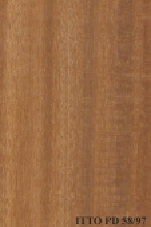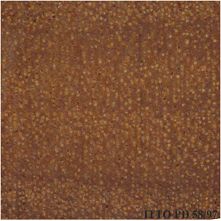
KOTIBé (Nesogordonia papaverifera)
Trade Name
Kotibé
Scientific Name
Nesogordonia papaverifera R.Cap.
Family
STERCULIACEAE
Common Names
Kotibe (Côte d`Ivoire); Kissinhungo (Angola); Danta (United Kingdom); Kissnhungo (Angola); Kondofindo (Zaire); Aborbora (Gabon); Naouya (Central African Republic); Ovoui (Cameroon); Ovoe (Cameroon); Otutu (Nigeria); Danta (Ghana); Epro (Ghana); Akumaba (Ghana); Abumana (Ghana); Naouya (Angola); Owoe (Cameroon); Kotibe
Scientific Name Synonyms
Cistanthera papaverifera A. Chev.
Description Of The Tree
Botanical Description
The tree reaches a height of 30 to 40 m. The bole is usually clear, cylindrical, straight to 13 to 26 m in length. The trunk diameter attains 80 to 120 cm over the short buttresses.
Natural Habitat
Nesogordonia fouassieri grows in dense stands, commonly in areas where savanna has been replaced by forest. It is found in mixed and dry deciduous forests and in transitional forests.It is known or inferred that the harvesting of specimens from the wild f
Natural Distribution
West Africa, from Sierra Leone to Cameroon and Northern Gabon.
Wood Identification
Anatomic Description Of Wood
Wood diffuse porous. Occasionally vessels exclusively solitary (over 90%). Tangential diameter of vessel lumina 100 to 150 micras (small). Non-vestured pits. Vessels per mm2 more than 20 (very abundant). Simple perforation plates. Vessel-ray pits similar to int Apotracheal axial parenchyma diffuse and/or diffuse in aggregates. Axial parenchyma storied. Prismatic crystals in short chains in chambered axial parenchyma cells. 3 to 4 cells per parenchyma strand. 4 to 10 rays per mm (medium). Rays storied. Rays 1 to 4 seriate. Body ray cells procumbent with one row of upright and/or square marginal cells (Kribs-III). Non-septate fibers. Fibers with simple to minutely bordered pits.
-
 Wood Macro Photo Radial Plane
Wood Macro Photo Radial Plane
-
 Wood Micro Photo Of Transversal Section
Wood Micro Photo Of Transversal Section
Availability
Cites Status
Unrestricted
General Wood Description
Color
The sapwood is pale, it has a thickness of 5 cm. The heartwood is red-brown, it is clearly demarcated. The silver figure is fine.
COLOR INDEX (1=Black, 7=Light yellow,white)
4
Grain
Straight or slightly interlocked, sometimes with an influence on further processing operations.
Texture
The texture of the wood is fine.
Luster
This wood is commonly of low luster.
Natural Durability
Moderately durable to decay. Without preservative treatment, this species can be used only under risk of occasional re-humidification. It is not suited for uses with risks of permanent or long-lasting humidification. Moderately resistant to termites attack
Natural durability index (1= Very high durability, 7=Vey low durability)
3
Internal Growth Stresses
No residual growth stresses are found.
Silica Content
Silica Content: Silica content is negligible. Amounts over 0.05% may affect wood processing. Silica Value: 0.01
Resistance To Impregnation
Difficult to treat with only a low penetration of the preservative products.
Wood Physical Properties
Basic Density or Specific Gravity (O.D. weight/vol. green) (g/cm³)
0.67
Air-dry Density (Weight and volume at 12%MC) (g/cm³)
0.76
Total shrinkage Tangential (Saturated to 0%MC) (%)
7.5
Total shrinkage Radial (Saturated to 0%MC) (%)
5.1
Recommended Dry Kiln Schedule
FR-6
Dimensional stability ratio (Total Tangential Shrinkage %/Total Radial Shrinkage %)
1.5
Wood Chemical Properties
Wood Mechanical Properties
Bending Strength (MOR),12%MC (kgf/cm²)
1209
Stiffness (MOE) 12%MC (kgf/cm²)
132681
Compression parallel to fiber 12%MC (kgf/cm²)
677
Compression perpendicular to fiber 12%MC (kgf/cm²)
93
Shear strength radial 12%MC (kgf/cm²)
99
Janka hardness (side) 12%MC (kgf)
710
Janka hardness (end grain) 12%MC (kgf)
796
Workability
Sawing
Sawing of this species requires powerful equipment.
Rotary Veneer Cutting
Suitable for slicing, also suitable for peeling if treated.
Sliced Veneer
Suitable for slicing, also suitable for peeling if treated.
Blunting Effect
Moderate blunting effect; stellited blades for sawing and carbide tools for machining are advised.
Machining
It needs powerful tools for processing. Possible difficulties caused by interlocked grain are reported.
Planing
Moderately easy; tools must be cautiously sharpened.
Moulding
Moderately easy; tools must be cautiously sharpened.
Turning
30
Boring
Moderately easy; tools must be cautiously sharpened.
Mortising
Moderately easy; tools must be cautiously sharpened.
Nailing
Pre-boring is necessary.
Gluing
Glues well if basic gluing technical rules are followed.
Sanding
Easy to perform; it gives good results.
Polishing
Can be polished without surface preparation.
Steam Bending
This species can be used for steam bending.
Response To Hand Tools
Working with hand tools is difficult.
REFERENCED USES
End Uses Summary
HOUSING GENERAL, boards, flooring, parquet, frames, steps, panelling, fittings, FURNITURE AND CABINETS, luxury furniture, cabinets, PLYWOOD AND VENEER, faces, Decorative veneer, TURNING, ornaments, turned furniture, cutlery, lasts, TOOLS, tool handles, agricultural tools, CONTAINERS, truck bodies, truck flooring, NAVAL CONSTRUCTION, boat fins, boat oars, OTHER AND MUSICAL INSTRUMENTS, handicrafts
General Housing
- 10 - Silica in Timbers
Boards
- 13 - Dry kiln schedules for commercial woods. Temperate and tropical. Section III. Latin American (Mexico, Central, and South America) Woods–Conventional Temperatures
Flooring
- 14 - Handbook of Hardwoods
Parquet
- 15 - Empire Timbers
Frames
- 16 - Woods of the World
Steps
- 17 - Tree Conservation Database
Paneling
- 18 - W3TROPICOS Missouri Botanical Garden
Fittings
- 19 - Silica in Timbers
Furniture Cabinets
- 21 - Tropical timbers of the world. Part III-Southeast Asian and Oceanian Species.
Furniture, Luxury
- 22 - Dry kiln schedules for commercial woods. Temperate and tropical. Section IV-Asian and Oceanian Woods
Cabinet
- 24 - Empire Timbers
Panels, Veneers
- 25 - Directory of Timber Trade Malaysia
Faces
- 26 - Annual Review and Assessment of the World Timber Situation 1998-ITTO
Decorative veneer
- 28 - Ministry of Agriculture, Fisheries & Forest of Fiji
Turning
- 30 - Embassy of Honduras in Japan
Ornaments
- 31 - Embassy of Colombia in Japan
Turned Articles
- 32 - Embassy of Cote d`Ivoire in Japan
Knife Handles
- 33 - Embassy of Gabon in Japan
Lasts
- 34 - Embassy of Indonesia in Japan
Tools
- 42 - Utilización Industrial de Nuevas Especies Forestales en el Perú.
Tool Handles
- 43 - Maderas de Bolivia (Características y Usos de 55 Maderas Tropicales)
Agricultural Tools
- 44 - Atlas of Peruvian Woods
Truck Body
- 53 - Timbers of the New World
Truck Flooring
- 54 - Bulletin of the Government Forest Experiment Station N.157: Identification of Tropical Woods
Shipbuilding
- 55 - Tropical Timber Atlas of Latin America
Boat Fins
- 58 - Guía de Árboles de Bolivia
Boat Oars
- 60 - Amazonian Timbers, Characteristics and Utilization Volume II; Curuá-Una Experimental Forest Station
Handcraft
- 66 - Maderas latinoamericanas. VII. Caracteristicas anatomicas. propiedades fisicomecanicas, de secado, y tratabilidad de la madera juvenil de Cordia alliodora (Ruiz & Pav. Oken.)
Please Provide Information To View Producer Information